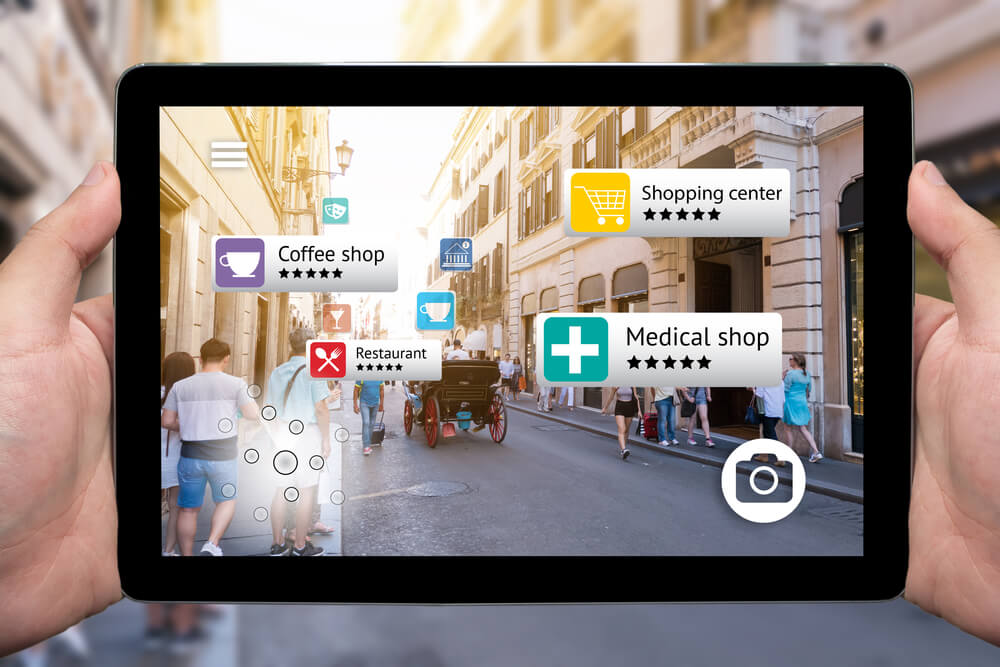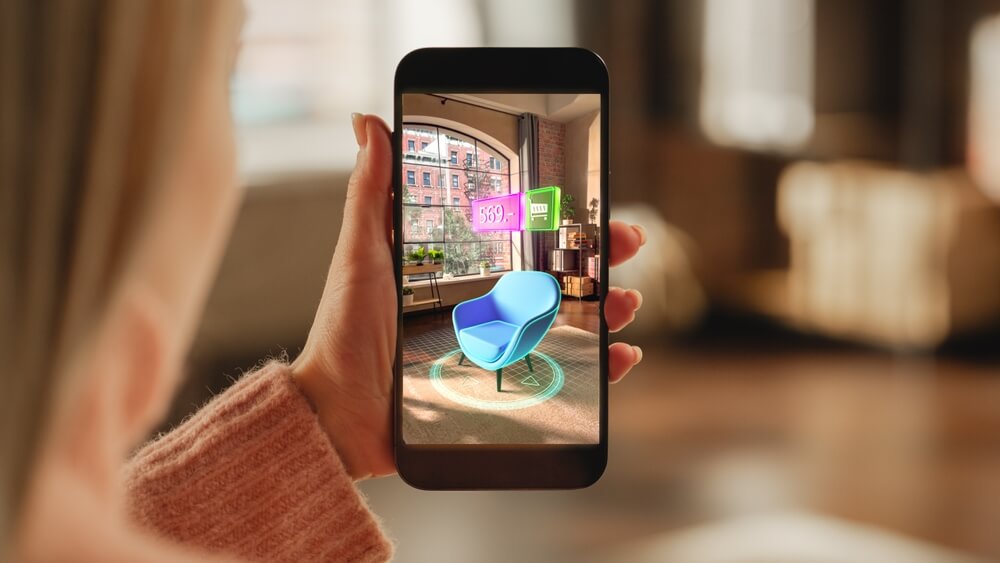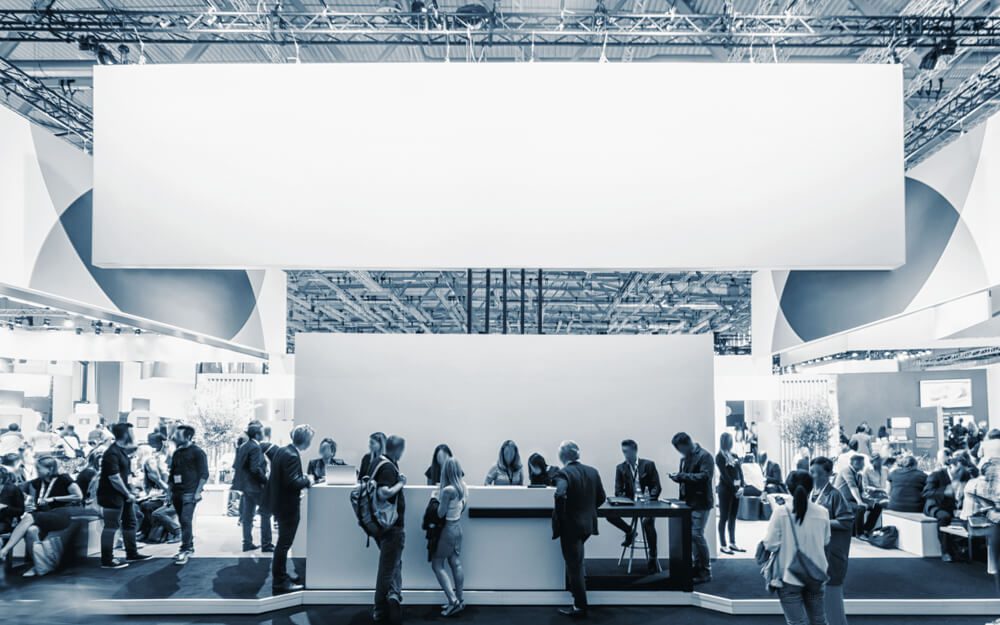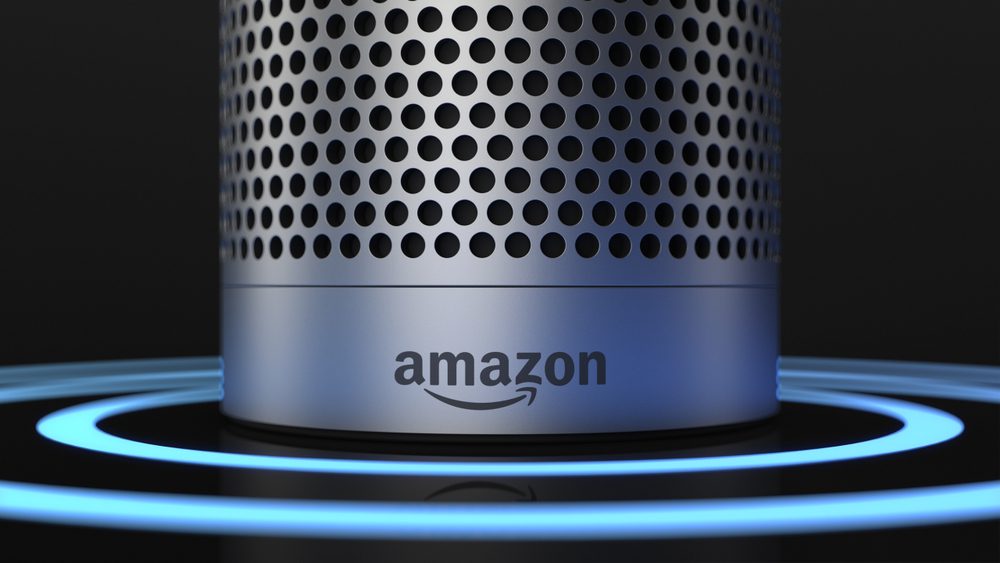
Augmented Reality: Great Tool for B2B Marketing Results?
Business-to-business (B2B) augmented reality (AR) involves integrating virtual elements into the real-world environment to enhance communication, product demonstrations, and customer engagement.
AR technology provides immersive experiences that allow clients to interact with products in a virtual space, visualize complex solutions, and understand intricate processes.
This guide further explores how AR boosts B2B marketing:
- Enhancing product demonstrations
- Engaging in trade shows and events
- Measuring the effect of AR
- Challenges and best practices
Find out how AR technology can help your company achieve B2B goals.
Watch this video to find out more about how Digital Authority Partners can create a great marketing strategy for you!
Understanding AR in B2B Marketing: An Overview
AR technology overlaps digital information or virtual elements onto the real-world environment when viewed through a smartphone or tablet camera. It offers unique opportunities to enhance customer engagement and demonstrate your unique value proposition in a dynamic and immersive way.
AR provides B2B businesses with unique opportunities in areas such as:
- Interactive product demonstrations: AR allows B2B marketers to demo products and services beyond static images or videos. With AR, potential clients can visualize complex products or solutions in real time within their environment, facilitating better understanding and informed decision-making.
- Training and education: B2B companies use AR to deliver immersive education for employees or clients. The simulations provide a safe virtual environment to practice complex procedures or interact with equipment without physical resources.
- Custom visualization: Unlike traditional marketing tools, AR offers customizable visualization options tailored to the specific needs of B2B clients. Companies can develop AR applications that allow clients to customize product configurations or visualize how solutions integrate with their existing infrastructure, enhancing personalization and relevance.
- Real-time data integration: AR applications integrate real-time data for valuable insights during client interactions. For example, the technology overlays display performance metrics, usage data, or predictive analytics to help clients make informed decisions and optimize their operations.
- Remote collaboration and support: AR allows businesses to guide, troubleshoot, or assist teams and users virtually. For instance, experts direct clients on completing a task or operating equipment through AR-enabled video feeds, improving efficiency and reducing downtime.
AR provides interactive experiences that drive interest and spur differentiation. Through AR, B2B marketers can showcase complex products, offer virtual tours of facilities or equipment, and facilitate interactive sessions. All these enhance customer understanding, foster deeper connections, and drive business outcomes.
Enhancing Product Demonstrations with AR

AR is one of the new software trends for B2B marketing. It elevates demonstrations through immersive experiences that make complex products and services more tangible. It allows potential clients to visualize products in 3D, explore features and functionalities in real time, and interact with virtual representations of products at scale.
This enhances engagement, facilitates better comprehension of product capabilities, and fosters more profound connections between clients and offerings, increasing conversions and long-term customer satisfaction.
Here are examples showcasing successful AR implementation in product demonstrations:
1. Industrial Equipment Visualization
Manufacturing companies use AR to showcase large-scale industrial equipment, such as machinery or production lines, during product demonstrations. Clients then view virtual representations of equipment in their factory settings, allowing them to assess fit, functionality, and potential integration points before making purchasing decisions.
2. Architectural Visualization
Architecture and construction firms leverage AR to enhance demonstrations for building designs and construction projects. Clients examine virtual 3D models of plans overlaid with real-world environments, understand building designs, explore layouts, and assess the influence of design decisions on space utilization and aesthetics.
3. Medical Device Simulation
B2B healthcare companies use the technology to simulate medical devices and equipment during demonstrations. Healthcare professionals interact with virtual representations of tools, such as surgical instruments or imaging equipment, to practice procedures, explore functionalities, and assess usability.
4. Automotive Product Visualization
Automotive manufacturers employ AR to enhance product demonstrations for vehicles and components. Potential clients visualize car models overlaid in real-world settings and explore their features, such as driver assistance systems or infotainment displays, and customize colors.
5. Technology Solution Integration
B2B technology companies integrate AR into product demonstrations for software solutions. Clients employ it to display interfaces and workflows overlaid onto their existing systems. This enables them to assess compatibility, user experience, and integration complexity.
Creating Engaging Trade Shows and Events with AR

AR revolutionizes B2B events with interactive experiences that captivate attendees and leave a lasting impression. Through AR-enabled exhibits and demonstrations, participants can engage with virtual products and immerse themselves in experiences that vividly bring abstract concepts to life.
AR is one of the digital design types that enhances engagement through hands-on interactions and personalized experiences. It also fosters more profound connections and increases brand recall.
Here are more AR applications in a B2B event:
1. Product Demonstrations
B2B companies use AR to showcase their products or solutions at trade shows and events. Attendees use AR-enabled devices or applications to interact with virtual representations of products, explore features and functionalities, and better understand how offerings address their business needs.
2. Interactive Presentations
Speakers use AR overlays to illustrate complex concepts, visualize data or processes in real time, and engage audiences in interactive demonstrations that enhance comprehension and retention of critical information.
3. Virtual Booth Tours
B2B exhibitors leverage AR to offer virtual booth tours to those who cannot visit in person or wish to explore exhibits at their own pace. With AR-enabled mobile apps or virtual-reality headsets, remote participants navigate environments, interact with digital content, and engage with exhibitors in real time.
AR ultimately drives interest, leads, and business opportunities at trade shows and events.
Measuring the Effect of AR
Continuous monitoring of the benefits of AR in B2B helps measure the technology’s ability to achieve desired outcomes such as lead and revenue generation.
The insights determine the experiences or use cases that resonate most with prospects, optimizing future campaigns. They also justify the investment in the technology.
Here are techniques to measure AR’s effect on marketing:
- Identify the engagement rates by tracking time spent interacting with AR content, number of interactions per user, and click-through rates (CTR) within AR experiences.
- Assess the technology’s impact on lead generation through lead conversions attributed to AR interactions, the number of qualified leads generated through AR experiences, and conversion rates of leads originating from such campaigns.
- Evaluate the performance of AR content based on content views, shares, and interactions.
- Gather feedback from B2B clients and prospects through surveys to assess their perception of their immersive experiences.
- Measure AR’s effect on sales enablement by tracking sales conversion rates, deal size, and velocity for leads engaged through interactive experiences.
Analyzing these metrics helps determine the technology’s contribution to closing deals, accelerating sales cycles, and driving revenue growth within B2B organizations.
Focusing on Challenges and Best Practices
Several AR limitations and challenges exist, including device incompatibility, legal implications, and rendering issues affecting user experience. Additionally, creating compelling content requires specialized skills and resources which small businesses may not have.
Manage these challenges with these best practices:
- Align the technology’s use with marketing and business objectives.
- Conduct thorough research to understand the specific needs, preferences, and pain points of B2B target audiences.
- Tailor AR experiences to address these needs effectively, providing value-added solutions that resonate with potential clients and differentiate the brand.
- Integrate AR seamlessly into existing marketing channels and strategies to maximize influence and reach.
- Maintain consistency in branding, messaging, and user experience across all touchpoints, whether AR-enabled mobile apps, websites, or event experiences.
- Prioritize user experience (UX) in AR development to ensure intuitive navigation, engaging interactions, and valuable content delivery.
- Implement robust analytics to track AR-driven marketing strategies and gather actionable insights. Monitor essential metrics such as engagement rates, lead conversions, and return on investment (ROI) to evaluate effectiveness and improve campaigns.
Summing Up
AR offers B2B companies the ability to create immersive experiences that engage and educate the audience in novel ways, driving deeper understanding and connection with products and services.
From enhancing engagement to facilitating personalized interactions and fostering innovation in marketing, AR technology can help drive business growth. How prepared is your business to adopt this technology, and what steps will you take to leverage AR for a competitive edge in your B2B strategy?
Let an expert help prepare your business for the future. Contact Digital Authority Partners (DAP) today to schedule a free consultation with a B2B marketing consultant.
Want To Meet Our Expert Team?
Book a meeting directly here



